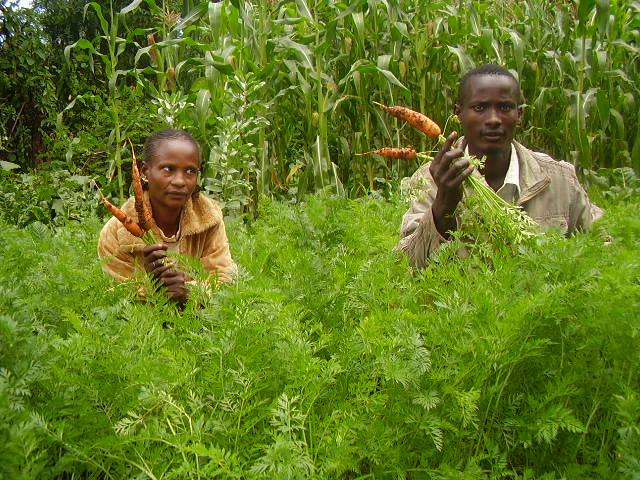8.2 Improving Women's Access to Extension
Agricultural extension strategies traditionally have focused on increasing production of cash crops by providing men with training, information, and access to inputs and services. This male bias is illustrated in farmer training centres, which have been established to provide residential training on technical subjects. First, most of the training centers do not provide separate washing and sleeping accommodations for women and do not provide facilities for the care of babies or young children which may not attract women to attend training programs. Second, women's daily workloads do not usually allow them to be absent from home for residential training; even attending short courses may cause overwhelming problems in arranging substitute care for children or the home. And third, even where attendance of women is quite high as a proportion of the total, women are given instruction mainly in home management and craft subjects and not in technical agriculture.
Further, extension services have been staffed predominantly by men. Only in countries such as the Philippines have women field staff been deployed in sufficient numbers and with sufficient resources to become effective agents of change among women farmers. The recommended selection criteria, such as title to land, literacy, or cooperative membership, as well as male extension staff's assumptions about women's roles in farming, have usually excluded women involvement.

Figure 10: A woman with her partner participated in extension program
Initially, the conventional extension approach to female farmers was related to the reproductive and domestic roles that underestimated the productive role. The gender aspect was not recognized as a significant factor in designing the rural development strategies used. All the focus of extension services targeting women farmers were associated with their traditionally accepted domestic roles (more on household management, nutrition, cooking, and family planning). This home economics extension program was an important way of reaching women farmers, and could have been more effective if it had been addressing the productive role of women as well.
Development policy makers and planners are becoming increasingly more aware of the crucial contributions of women farmers to agricultural production and food security. Nevertheless, agricultural policies on the whole still do not address the needs of women farmers adequately. Where the roles and needs of women farmers are recognized in policy, this tends not to be adequately translated into practice in agricultural development programs and planning. Agricultural research also gives inadequate attention to women farmers and their needs. As has been pointed out, for example, women and men farmers are often responsible for different agricultural tasks. Research is generally focused on the improvement of production and technologies for men agricultural tasks, while those of women are neglected. In addition to this, female-headed households are even more invisible to researchers, donors and policy makers.
Therefore,despite a remarkable growth and expansion of institutions and programs,Ethiopia's agricultural research system still has some gaps.These gaps include lack of gender as part of the research organizational structure,program formation,as well as research trials/experiments initiation,review and approval procedures.
Licensed under the Creative Commons Attribution Share Alike 3.0 License
This Learning Resource was Created by the Regional MSc AICM Program at the Haramaya University RDAE Department with Support of AgShare Project.